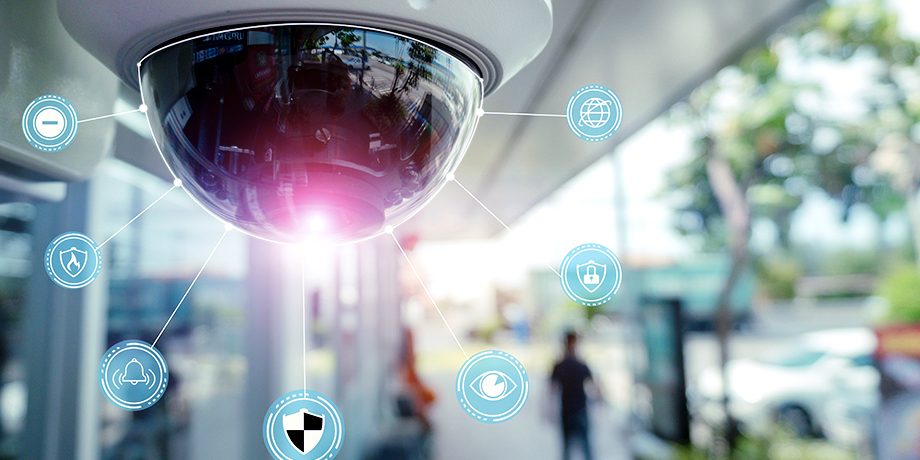Understanding the Working Mechanism of CCTV Cameras for Enhanced Security
Closed-circuit television (CCTV) cameras are the silent guardians that play a pivotal role in bolstering security across a wide range of environments. As technology continues to advance, the working mechanism of these cameras becomes increasingly sophisticated, providing not just surveillance but a comprehensive solution for safeguarding people and property. The availability and affordability of CCTV camera prices in Bangladesh are important factors when making a strategic decision, as both individuals and businesses in Bangladesh are realizing the need for all-encompassing surveillance solutions.
At its core, a CCTV camera operates by capturing and transmitting video signals to a specific set of monitors or recording devices. The process begins with the camera’s lens, which acts as the eye capturing visual information. Modern CCTV cameras are equipped with high-resolution lenses that allow for clear and detailed imagery, essential for accurate monitoring.
The captured visual data is then converted into an electrical signal by the camera’s image sensor. The two most common types of image sensors are Charged Coupled Device (CCD) and Complementary Metal-Oxide-Semiconductor (CMOS). These sensors determine the camera’s sensitivity to light and its ability to reproduce colors faithfully.
Once the electrical signal is generated, it is sent to the camera’s signal processing unit. This unit is responsible for enhancing the quality of the video feed by adjusting parameters such as brightness, contrast, and saturation. Some advanced CCTV cameras also feature digital signal processing (DSP) capabilities, allowing for real-time image enhancement and optimization.
The processed video signal is then transmitted via cables or wirelessly to monitors or recording devices. In wired systems, coaxial cables are commonly used, while wireless systems rely on Wi-Fi or other communication protocols. The choice between wired and wireless setups depends on the specific requirements of the surveillance environment.
To ensure continuous monitoring, CCTV cameras can operate 24/7, thanks to infrared (IR) or thermal imaging technology. Infrared LEDs embedded around the camera lens provide night vision capabilities, allowing the camera to capture clear images in low-light or total darkness. Thermal imaging, on the other hand, detects heat signatures, making it effective even in pitch-black conditions.
One key aspect of CCTV camera systems is their ability to be integrated with other security technologies. This integration enhances overall surveillance capabilities by combining the strengths of various security measures. For example, CCTV cameras can be linked to access control systems, alarms, and analytics software, creating a comprehensive security network.
Businesses, in particular, benefit significantly from the installation of CCTV cameras. Beyond the obvious security advantages, these systems can be used for monitoring employee activities, preventing theft, and even improving overall operational efficiency. The presence of visible CCTV cameras alone acts as a deterrent, discouraging potential criminals and promoting a sense of safety.
Key Features to Consider When Choosing a CCTV Camera System
One of the fundamental considerations when choosing a CCTV camera system is the resolution. Resolution determines the clarity and detail of the captured images or footage. High-definition (HD) and ultra-high-definition (UHD) cameras are now common, providing crisp and detailed visuals that are essential for accurate surveillance.
Another vital feature is the camera’s field of view (FOV). The FOV determines the area that a single camera can cover. Wide-angle lenses enable broader coverage, making them suitable for open spaces, while narrow-angle lenses are ideal for focusing on specific points of interest. Understanding the surveillance area and desired coverage is crucial in choosing the appropriate FOV for the CCTV system.
Infrared (IR) or night vision capabilities are indispensable for around-the-clock surveillance. Cameras equipped with IR LEDs can capture clear images in low-light conditions or complete darkness. When evaluating night vision capabilities, it’s essential to consider the camera’s range and the quality of the infrared illumination, ensuring effective monitoring in various lighting environments.
CCTV cameras come in different types, each designed for specific applications. Dome cameras are discreet and suitable for indoor use, while bullet cameras are more visible and designed for outdoor surveillance. Pan-tilt-zoom (PTZ) cameras offer remote control over the camera’s movement and zoom functions, providing flexibility in monitoring large areas. Understanding the intended use and environment helps in selecting the right type of camera for the job.
The storage capacity and recording capabilities of a CCTV system are critical factors to consider. Modern systems often use digital video recorders (DVRs) or network video recorders (NVRs) to store and manage footage. The storage capacity should align with the expected recording duration and resolution. Additionally, consider whether the system supports continuous recording or motion-activated recording to optimize storage usage.
Integration capabilities play a significant role in maximizing the effectiveness of a CCTV camera system. The ability to integrate with other security technologies such as access control systems, alarms, and analytics software enhances overall security measures. Look for systems that offer seamless integration options to create a comprehensive and interconnected security network.
Remote viewing and accessibility are increasingly essential features in CCTV systems. The ability to view live footage or access recorded videos remotely via smartphones, tablets, or computers provides real-time monitoring and peace of mind. Ensure that the chosen system offers user-friendly and secure remote access options.
Consider the durability and weather resistance of the cameras, especially for outdoor installations. Weatherproof and vandal-resistant cameras are designed to withstand harsh environmental conditions and tampering, ensuring reliable performance over time.
Finally, take into account the scalability of the CCTV system. As security needs may evolve, a scalable system allows for easy expansion or upgrades without the need for a complete overhaul. This adaptability ensures that the CCTV system can grow alongside changing requirements.

Factors Influencing CCTV Camera Prices in Bangladesh
CCTV Camera Price in Bangladesh can vary significantly due to various factors that influence the market. Understanding these factors is crucial for anyone looking to invest in a reliable and cost-effective surveillance system. In this article, we will delve into the key elements that contribute to the fluctuation in CCTV camera prices in Bangladesh.
One of the primary factors impacting CCTV camera prices is the technology behind the cameras. Different types of CCTV cameras, such as analog and IP cameras, come with varying price tags. Analog cameras are generally more affordable, making them a popular choice for budget-conscious consumers. On the other hand, IP cameras offer advanced features and higher resolution but often come at a higher cost.
The brand reputation also plays a significant role in determining the price of CCTV cameras. Well-established brands with a proven track record of quality and reliability tend to have higher prices. However, this doesn’t mean that lesser-known brands don’t offer value for money. It’s essential to balance brand reputation with individual requirements and budget constraints.
The inclusion of advanced features and specifications can contribute to the overall cost of CCTV cameras. High-resolution imaging, night vision capabilities, and smart detection features all add to the price. Buyers should carefully assess their specific needs and opt for features that align with their security requirements without overspending on unnecessary functionalities.
Seasonal trends and promotions can also impact CCTV camera prices in Bangladesh. During certain times of the year, vendors may offer discounts or special packages, providing an opportunity for buyers to secure a good deal. It’s advisable to stay informed about these trends and make purchases at the most opportune times to maximize savings.
Finding Budget-Friendly CCTV Cameras Without Compromising Quality in Bangladesh
For individuals and businesses in Bangladesh seeking to enhance their security through CCTV cameras, balancing quality and cost is often a crucial consideration. Experts explore strategies for finding budget-friendly CCTV cameras in Bangladesh without compromising on essential features and reliability.
Investigating the various brands and models that are on the market is one of the most important things to do when searching for options that are affordable. Reputable brands may provide superior quality, but lesser-known brands can also deliver trustworthy CCTV cameras at more reasonable costs. Customers can make more informed decisions by investigating customer testimonials and reviews, which can provide information about the longevity and performance of less well-known brands.
Another effective strategy is to focus on the specific needs of the surveillance system. Not every application requires high-end features, and opting for a camera with essential functionalities can significantly reduce costs. Conducting a thorough assessment of the area to be monitored and identifying the necessary features, such as resolution and night vision capabilities, allows buyers to target their investments where it matters most.
Exploring local vendors and online marketplaces can uncover hidden gems in terms of cost-effective CCTV solutions. Local suppliers may offer competitive prices and personalized service, while online platforms often present a range of options with varying price points. Comparing prices across different channels ensures that buyers get the best value for their budget.
It’s crucial to be aware of any ongoing promotions, discounts, or clearance sales from reputable vendors. Periodically, CCTV camera suppliers may introduce special offers to boost sales, providing an excellent opportunity for buyers to acquire high-quality cameras at reduced prices. Staying vigilant and informed about such promotions can lead to substantial savings without compromising on the surveillance system’s effectiveness.

The Impact of CCTV Camera Types on Pricing in Bangladesh
Analog cameras have long been a staple in the surveillance industry and are often considered more budget-friendly compared to their digital counterparts. These cameras transmit video signals over traditional coaxial cables, making them a cost-effective choice for basic surveillance needs. The simplicity of analog technology contributes to lower production costs, resulting in competitive prices for consumers in Bangladesh.
IP cameras, which utilize digital technology and transmit data over the internet, typically come with a higher price tag. The advantages of IP cameras, such as higher resolution, remote accessibility, and advanced features like motion detection, contribute to their increased cost. Businesses and individuals in Bangladesh opting for IP cameras should be prepared to invest more for the added benefits offered by this digital technology.
There are also other types, such as dome cameras, bullet cameras, and PTZ (Pan-Tilt-Zoom) cameras. Each type caters to specific surveillance requirements and comes with its own pricing considerations. Dome cameras, for example, are often more discreet and blend seamlessly into indoor environments, while bullet cameras are designed for outdoor use, offering a visible deterrent to potential intruders.
Understanding the specific needs of the surveillance environment is crucial when selecting the type of CCTV camera. For areas requiring discreet monitoring, a dome camera might be the preferred choice, while large outdoor spaces may benefit from the visibility provided by bullet cameras. PTZ cameras, with their ability to pan, tilt, and zoom, are suitable for applications where dynamic surveillance is essential but come with a higher cost due to their advanced functionalities.
It’s important for buyers in Bangladesh to carefully assess their surveillance requirements and budget constraints before deciding on the type of CCTV camera. While analog cameras offer affordability, digital options like IP cameras provide enhanced features at a higher price. Choosing the right camera type based on specific needs ensures a balanced investment that meets both security goals and financial considerations.
Conclusion
To sum up, purchasing CCTV cameras is a wise choice that provides a variety of security measures. These systems do more than just monitor; they also instill confidence in users and discourage possible threats, promoting a safe atmosphere in both private and public areas. The efficacy of contemporary CCTV technology in preventing and resolving security issues is further bolstered by its sophisticated features, which include intelligent analytics, remote monitoring, and high-resolution imaging. CCTV cameras protect property and add to general peace of mind because they can monitor activities in real-time and may serve as an effective deterrent. Adopting CCTV systems’ dependability and effectiveness guarantees a proactive approach to preserving a safe and secure environment as technology advances.





